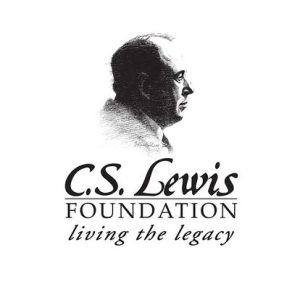
EPISODE SUMMARY:
In season 6 of the Eudo podcast, Paul and Courtney will explore the philosophy and theology of C.S. Lewis’s science fiction trilogy. We will explore the quest of art, beauty, literature, extra-terrestrial life, language, truth, and theology. We will travel together in space to new worlds and in time as Lewis helps us recapture what he calls elsewhere “the Discarded Image” of the Medieval world.
In the first episode, we will set the table by exploring some of C. S. Lewis’s more interesting and provocative claims about the nature of literature, story, and the imagination. This will help us better understand what he is up to as we explore theological and philosophical themes found within the Ransom Trilogy.
EPISODE NOTES:
“Myth Became Fact” (1944)
In this essay, Lewis explores the charge of his friend Corineus that no modern Christians are in fact Christians since they don’t really believe the historic doctrines of Christianity. Lewis denies that this is the case, but argues as follows: suppose it is true, how does Corineus explain the persistence of Christianity, even in its modernist form? Why hasn’t Christianity been abandoned wholesale in this modern age? Lewis’s answer is that it is the Christian story—the myth—“which is the vital and nourishing element” that gives life, that nourishes our souls [1]. To explain how stories nourish, Lewis notes two important points in his essay:
- First, stories help us understand the meaning of the world (and I would add: good stories understand us).
- Second, Lewis argues that Christianity is a perfect blend of reason and romance – “the heart of Christianity is a myth which is also a fact” [2].
The idea is that we were created to be nourished on the true—and the good and beautiful—and thus we need both reason and imagination in our journey to God and our journey with God.
“Is Theology Poetry?” (1945)
In this essay, Lewis explores the relationship between theology and the imagination. He argues that the Christian story is not the most aesthetically pleasing story and thus he doesn’t believe in it because it is poetry. Still, all stories are poetic, and all believed stories are aesthetically enjoyable, and in that sense, the Christian story is poetry. It is myth become fact, but it is still myth.
Two big ideas from this essay:
- First, man is a poetical animal.
- Second, we cannot communicate without some metaphors.
“On Stories” (1947)
In this essay, Lewis explores the nature of stories. Three things to note from this essay:
- First, two kinds of pleasure in reading stories.
- First, there is excitement—e.g., the excitement elicited when characters are in danger.
- Second, there is the pleasure of quest.
- Second, Lewis on science fiction – Of David Lindsay, Lewis states, “He is the first writer to discover what ‘other planets’ are really good for in fiction. No merely physical strangeness or merely spatial distance will realise that idea of otherness which is what we are always trying to grasp in a story about voyaging through space: you must go into another dimension. To construct plausible and moving ‘other worlds’ you must draw on the only real other world we know, that of the spirit” [3]
- Third, a definition of (good) stories: stories are “series of imagined events”; in other words: good stories reveal deep truths about prime reality; they pull back the curtain and give us a glimpse of reality as it really is.
The chief function of good stories is to reveal to us deep truths about the true story of the world.
“Bluspels and Flalansferes: A Semantic Nightmare” (1939)
In this essay, Lewis gives a famous account of the nature of the imagination and the role of metaphors in understanding reality. He argues for two big ideas
- First, the necessity of metaphor (and the imagination) to understand parts of ultimate reality
- Second, the imagination is the organ of meaning (and reason the natural organ of truth).
“Image and Imagination” (1931, unpublished until 2013)
We have learned that the imagination is the “organ of meaning.” But that doesn’t help us understand (i) how the imagination works or (ii) how it relates to reality. In this essay, Lewis describes the imagination as “Romantic Imagination.”
C.S. Lewis and the “Romantic Imagination.”
- Romantic = Lewis defines the romantic as an experience of intense longing (he defines it this way in the appendix to his A Pilgrim’s Regress).
- Romantic imagination = a faculty meant to aid the person by stirring up longing so he might follow his longing to its intended end, God.
He argues in three steps:
- Claim #1: Images serve the imagination
- Claim #2: Only the real world can furnish the context for things seen in the imagination.
- Claim #3: The imagination plays a key role in perception and, by analogy, in literature.
Conclusion and pay-off: In the same way that perception experience depends on the imagination and draws from the real world, so too in fiction is the imagination in the end dependent on reality. But, since we are talking of “romantic” imagination in the case of fiction, a good story can actually awaken longing and engagement with reality in a way that prime reality can’t. Thus, stories might uniquely help others engage reality in a way that a frontal attack through rational arguments might not.
RESOURCES MENTIONED:
- C. S. Lewis, “Bluspels and Flalansferes: A Semantic Nightmare”
- C. S. Lewis, “Image and Imagination”
- C. S. Lewis, “Is Theology Poetry?”
- C. S. Lewis, “Myth Became Fact”
- C. S. Lewis, “On Stories”

- [1] C. S. Lewis, “Myth Became Fact,” 64–65.
- [2] C. S. Lewis, “Myth Became Fact,” 66.
- [3] C. S. Lewis, “On Stories,” 17.




